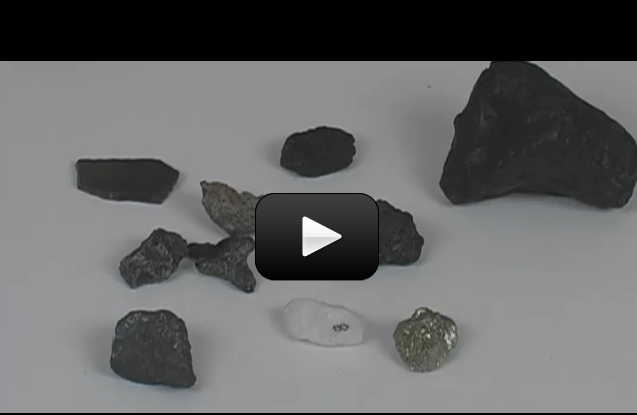A meteoroid is a small rock that zooms around outer space. When the meteoroid zips into the Earth’s atmosphere, it’s now called a meteor or “shooting star”. If the rock doesn’t vaporize en route, it’s called a meteorite as soon as it whacks into the ground. The word meteor comes from the Greek word for “high in the air.”
Meteorites are black, heavy (almost twice the normal rock density), and magnetic. However, there is an Earth-made rock that is also black, heavy, and magnetic (magnetite) that is not a meteorite. To tell the difference, scratch a line from both rocks onto an unglazed tile. Magnetite will leave a mark whereas the real meteorite will not.
Materials
- White paper
- Strong magnet
- Handheld magnifying glass (optional)


That’s the property of the mineral itself, the meteorite I tested is harder than the streak plate so it doesn’t leave a streak. Note that meteorites are made of many different things, there’s no mineral called a “meteorite”, so you have to break it down into the different minerals involved.
I was just wondering why the lodestone had a streak when the meteorites didn’t? Were going to do the space dust experiment and look at it under the microscope. Thank you!
lol
ok thanks aurora 🙂 🙂
You will still get some on your sheet of paper!
what if it is windy 😐
Where are we supposed to get the rocks from?
That’s a good question. Most of the magnetized dust is going to be material that arrives from outside the Earth, since only one mineral on earth is magnetized (lodestone, which is a magnetized form of magnetite). Since magnetite is mined, there isn’t a lot of it floating around the atmosphere on it’s own, the way meteorites are when they burn up in the atmosphere. You can read more about magnetite here and meteorites here.
With the paper experiment, how would we know that the magnetized pieces were tiny meteorite fragments/dust and not magnetic Earth rocks? Is there that much meteorite dust floating around us? Where could we read about “the meteorite dust around us”? Thanks! 🙂